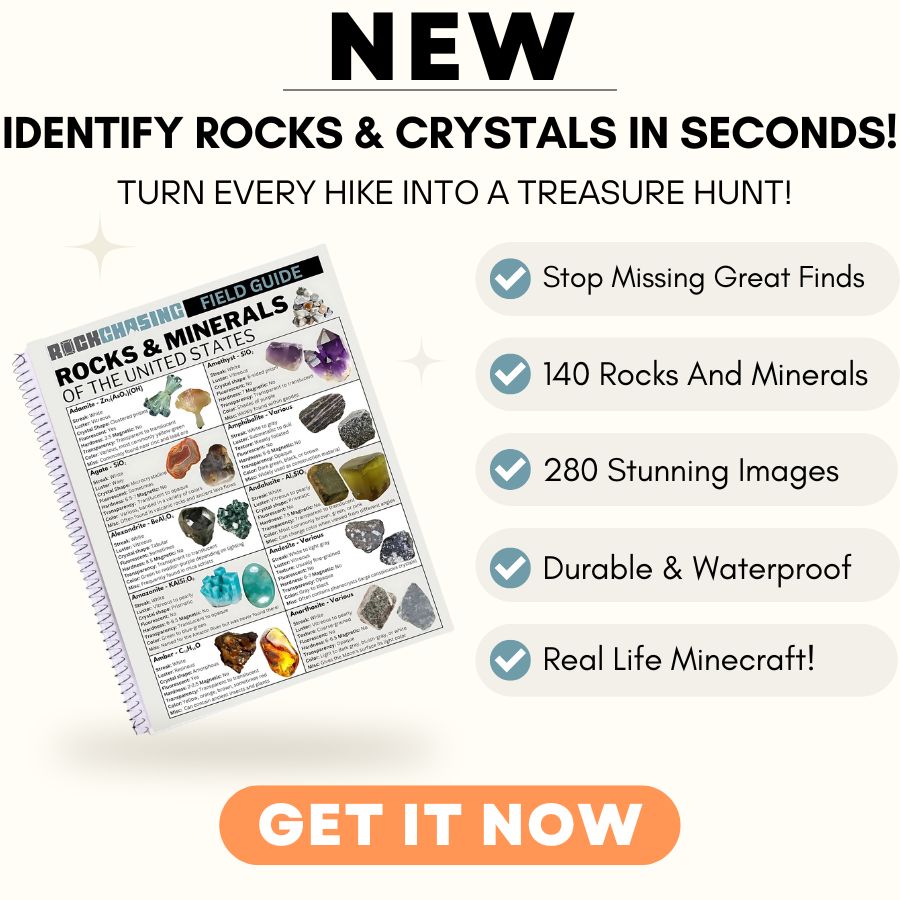Azurite’s deep blue color makes it a favorite among Florida rock collectors. The stone’s rich hue stands out against the state’s usual brown and tan rocks.
While Florida isn’t known for gemstones, you can still find nice pieces of azurite here. The mineral often shows up in limestone areas, which Florida has plenty of.
Many local collectors have found small but beautiful azurite specimens throughout the state. Some pieces even have malachite mixed in, creating stunning green and blue patterns. With some patience and the right spots, you might discover your own piece of this blue treasure.
How Azurite Forms Here
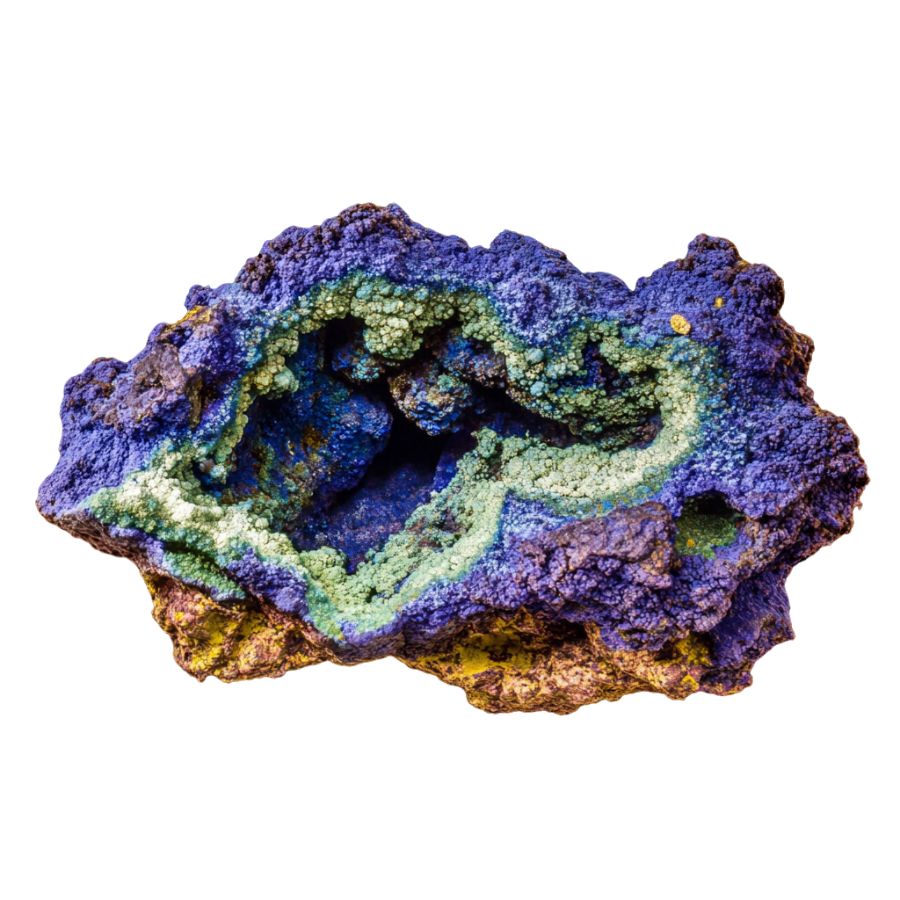
Azurite forms when copper-containing solutions react with carbonate rocks deep underground. It’s like rainwater seeping through rocks containing copper minerals.
As this acidic water dissolves the copper, it creates a solution that flows through limestone or similar carbonate rocks.
When these two meet, a chemical reaction happens, forming those beautiful blue azurite crystals. The process usually needs low temperatures and lots of carbon dioxide to work properly.
Sometimes, azurite forms in the oxidized zones of copper deposits, where the original copper sulfide minerals are weathering away.
That’s why you often find azurite near the surface of copper deposits, where it’s exposed to air and water.
Types of Azurite
Azurite occurs in several fascinating varieties, each displaying unique patterns, colors, and formations that make them distinct from one another. From sun-like radiating patterns to starry speckles and varying shades of blue to green, these different types showcase the mineral’s diverse beauty in nature.
Azurite Suns

Azurite Suns showcase striking circular patterns of deep blue azurite crystals set against white kaolin clay. These natural formations create a beautiful visual effect that looks like a celestial body, with blade-like crystals radiating outward from the center.
The deep azure blue of these specimens comes from copper carbonate minerals. When exposed to certain conditions, the azurite can sometimes show hints of green where it’s starting to transform into malachite, adding extra complexity to the patterns.
The contrast between the intense blue crystals and white background makes these rocks particularly eye-catching. Some pieces display additional features like concentric rings or varying crystal sizes, adding to their visual appeal.
K2 Azurite

K2 Azurite presents a unique combination of white granite speckled with perfectly round blue dots of azurite. These blue spots range from tiny specks to larger orbs, creating an appearance similar to a starry night sky against snow.
The formation process of K2 Azurite is quite special. The blue azurite spots formed when copper-rich solutions seeped into tiny cracks in the granite, creating these circular patterns. This makes each piece unique in its dot pattern and distribution.
Stone’s composition includes fine-grained granite minerals like quartz and muscovite, with azurite forming along the grain boundaries.
Sometimes, you might spot hints of green malachite alongside the blue azurite spots, adding extra color variation.
These specimens often show interesting variations in their dot patterns. Some pieces have densely packed spots, while others display more scattered arrangements, making each piece distinctively different from the next.
Azurmalachite
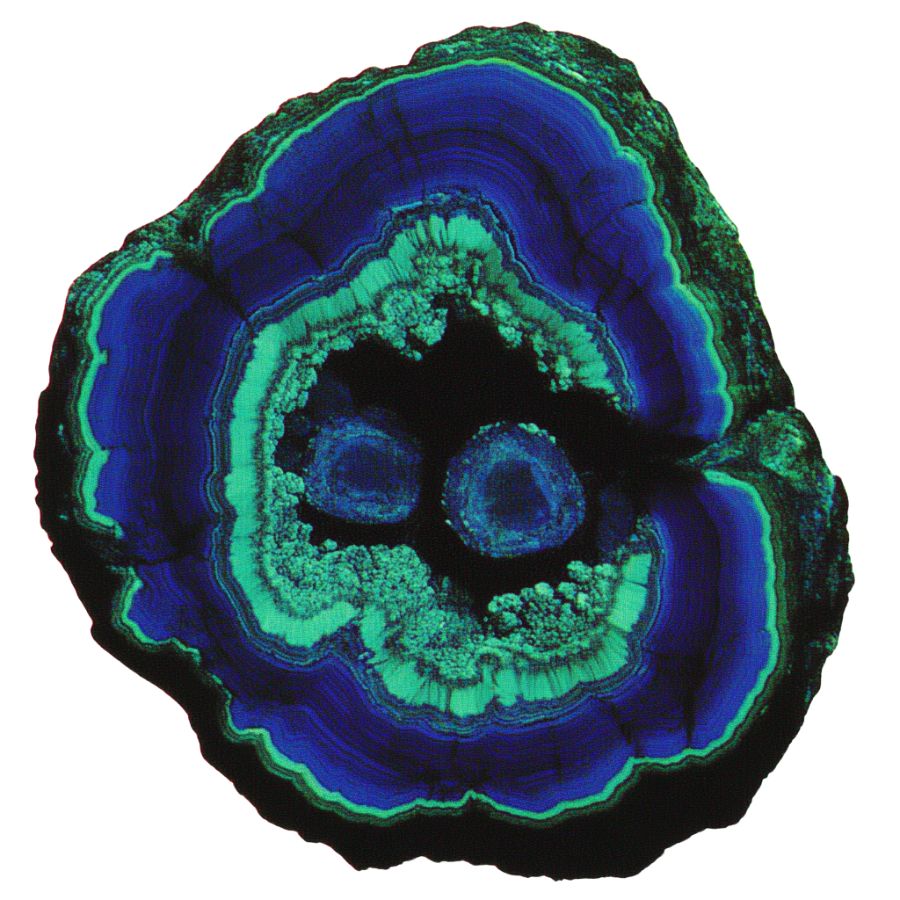
Azurmalachite is a mix of two minerals, azurite and malachite, both made of copper carbonate. The deep blue of azurite and the bright green of malachite blend together, creating eye-catching patterns.
This combination happens naturally when azurite slowly changes into malachite over time. The result is a stone with swirling colors that can be found in copper-rich areas around the world.
Azurmalachite is often shaped and polished for collectors and jewelry. Its mix of colors makes every piece look different, adding to its appeal.
Since it’s softer than many other stones, it needs careful handling to avoid scratches. Despite this, its unique appearance makes it a favorite among those who appreciate natural minerals.
Crystalline Azurite
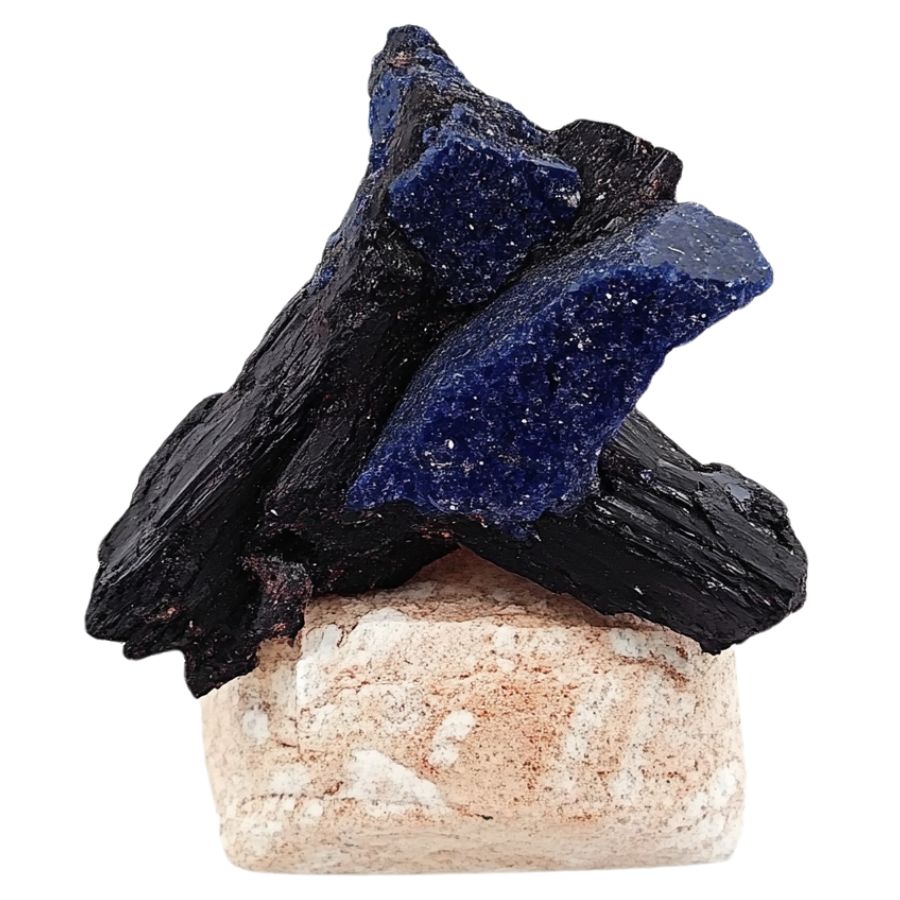
Crystalline azurite forms deep blue crystals that can be small and delicate or large and well-shaped. These crystals usually grow in sharp, geometric patterns, making them stand out from other forms of azurite.
They develop in areas rich in copper, often alongside malachite and other minerals. Some of the best crystals have been found in places like Morocco, Namibia, and the United States.
Because crystalline azurite is fragile, handling it carefully helps prevent damage. Exposure to light and air can also cause the crystals to slowly change into green malachite over time.
Collectors value these crystals for their intense color and unique shapes. Even though they are delicate, their deep blue color makes them one of the most recognizable copper minerals.
What Does Rough Azurite Look Like?
Azurite in its rough form is one of the most striking blue minerals you’ll encounter. Note that natural azurite can sometimes be confused with other blue minerals, but these tips will help you spot the real deal.
Look for the Signature Deep Blue Color
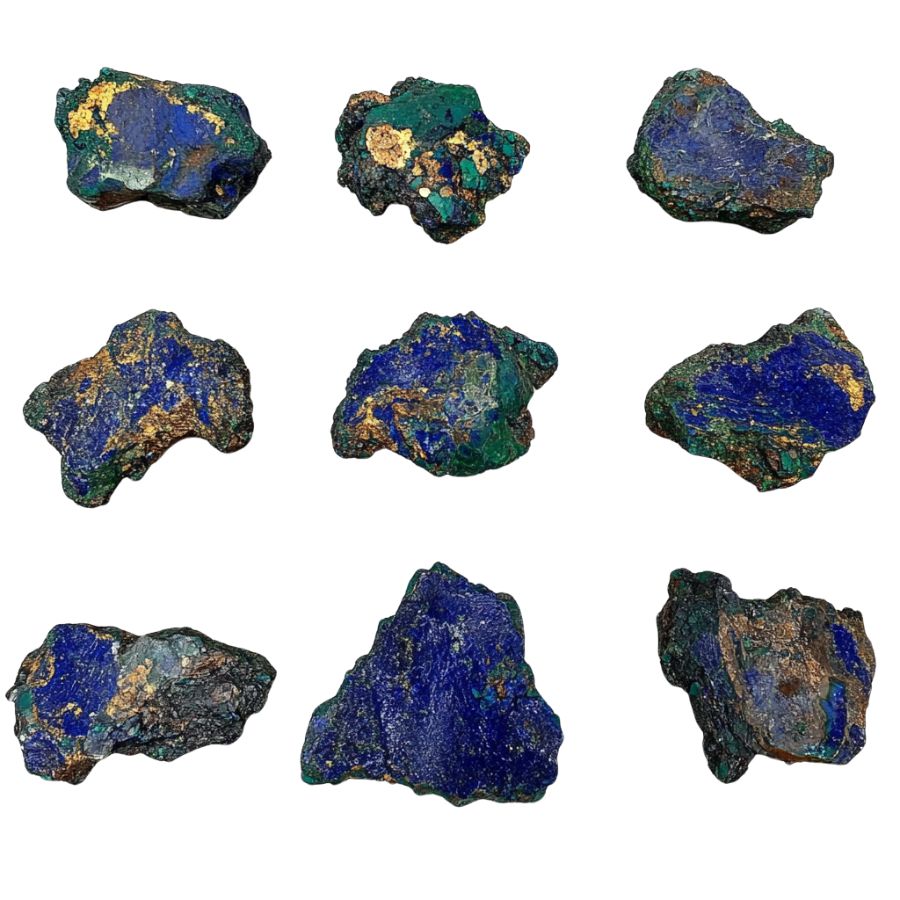
Raw azurite showcases an intense azure-blue color that’s hard to miss. Fresh specimens appear nearly royal blue, while weathered pieces might show darker shades.
Don’t be fooled by uniform blue coloring – natural azurite often has subtle variations in its blue tones. If you spot hints of light blue or even greenish patches, that’s normal! It’s actually showing early signs of transforming into malachite, its green cousin.
Check for Crystal Formations and Habits

Keep an eye out for distinctive prismatic or tabular crystals. Fresh azurite typically forms in clustered rosettes or blade-like formations. Sometimes you’ll spot perfect little crystals jutting out from the matrix (that’s the host rock).
The crystals might be stubby and short, or long and slender – both are legit! If you see crystals arranged in a fan-like pattern, you’ve probably got azurite.
Assess the Surface Texture and Luster
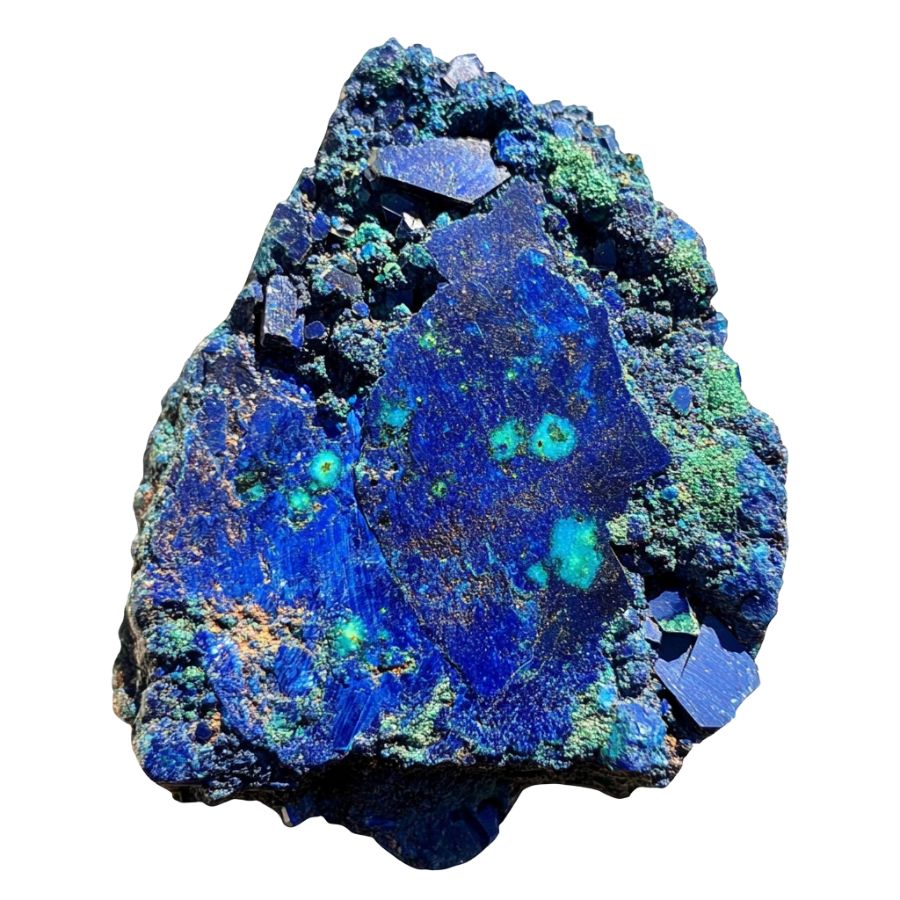
Run your fingers over the surface – azurite’s got this glassy to subvitreous luster that catches light beautifully. Massive specimens (chunks without obvious crystals) often show a more silky or velvety appearance.
Here’s a cool trick: hold it under bright light and slowly rotate it. Real azurite will show subtle flashes of light across crystal faces. Weathered surfaces might feel slightly powdery or chalky.
Test the Hardness and Structural Integrity

Azurite is relatively soft (3.5-4 on Mohs scale). Try this: use your fingernail – it shouldn’t scratch the mineral, but a copper penny will. Watch out though! It’s pretty fragile and can break along cleavage planes.
If it feels unusually hard or tough, you might be looking at dyed quartz or another blue mineral instead.
A Quick Request About Collecting
Always Confirm Access and Collection Rules!
Before heading out to any of the locations on our list you need to confirm access requirements and collection rules for both public and private locations directly with the location. We haven’t personally verified every location and the access requirements and collection rules often change without notice.
Many of the locations we mention will not allow collecting but are still great places for those who love to find beautiful rocks and minerals in the wild without keeping them. We also can’t guarantee you will find anything in these locations since they are constantly changing.
Always get updated information directly from the source ahead of time to ensure responsible rockhounding. If you want even more current options it’s always a good idea to contact local rock and mineral clubs and groups
Tips on Where to Look
Azurite is a copper carbonate mineral that forms in oxidation zones of copper deposits. Here’s where you can typically find this beautiful blue stone:
Limestone Areas
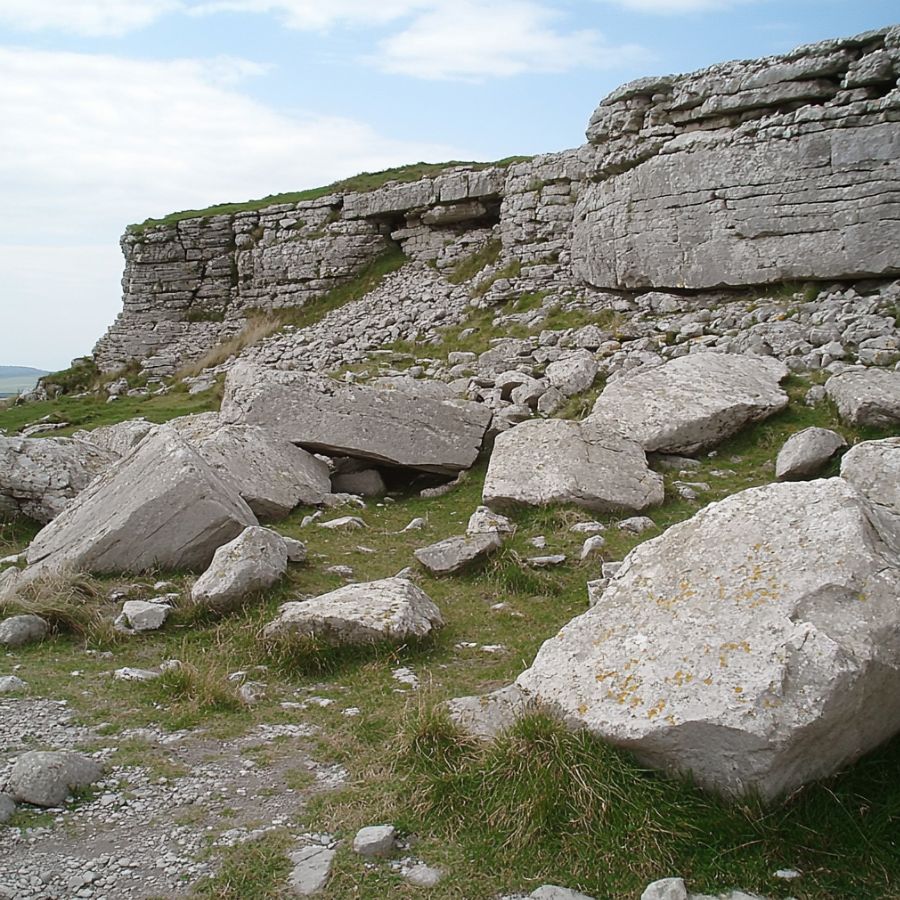
Look for areas with lots of limestone outcrops. Azurite loves to form in these rocks. Check weathered surfaces and cracks. The blue color often stands out against the gray limestone.
Sometimes you’ll find it mixed with green malachite, which is super cool because these two minerals often hang out together in the same spots. Search near the base of limestone cliffs or in quarries where they’ve cut into the rock.
Old Copper Mines
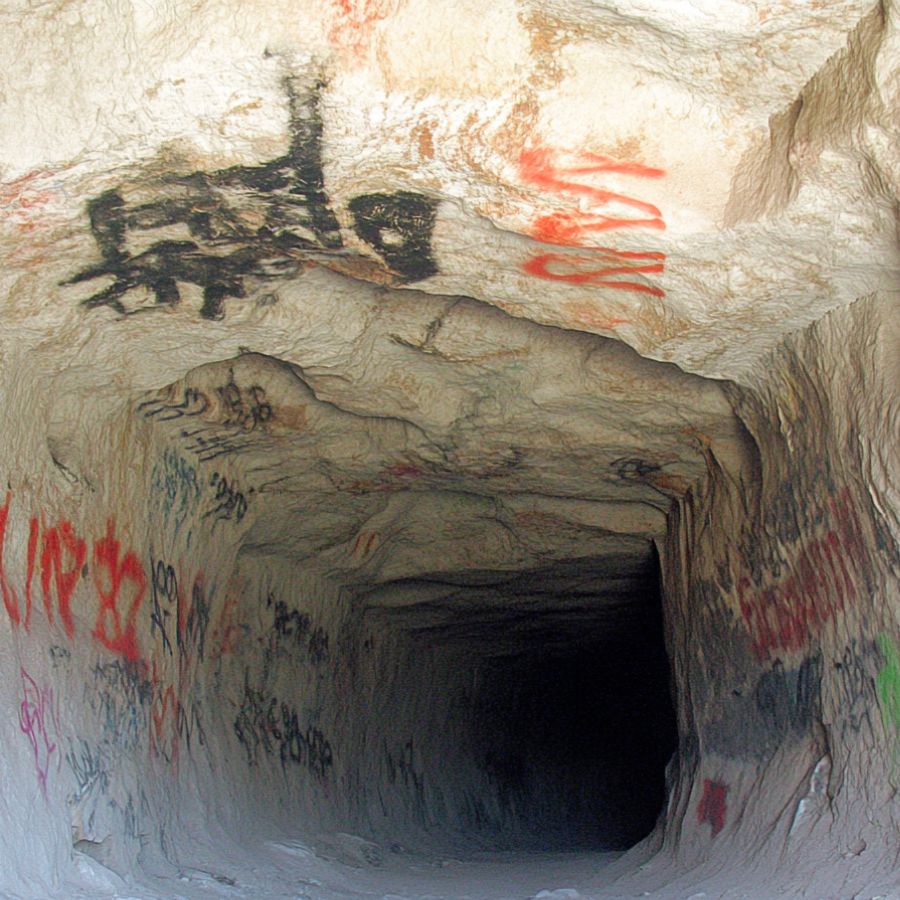
Abandoned copper mines are azurite hotspots. Check mine dumps and tailings piles. Look for rocks with green staining – that’s your first clue.
The stone often forms in small cavities or as crystal clusters. Bring a rock hammer and safety gear.
Mine dumps usually have lots of loose rocks, so you don’t need to dig deep. After rain is the best time because the wet rocks show color better.
Oxidized Rock Zones
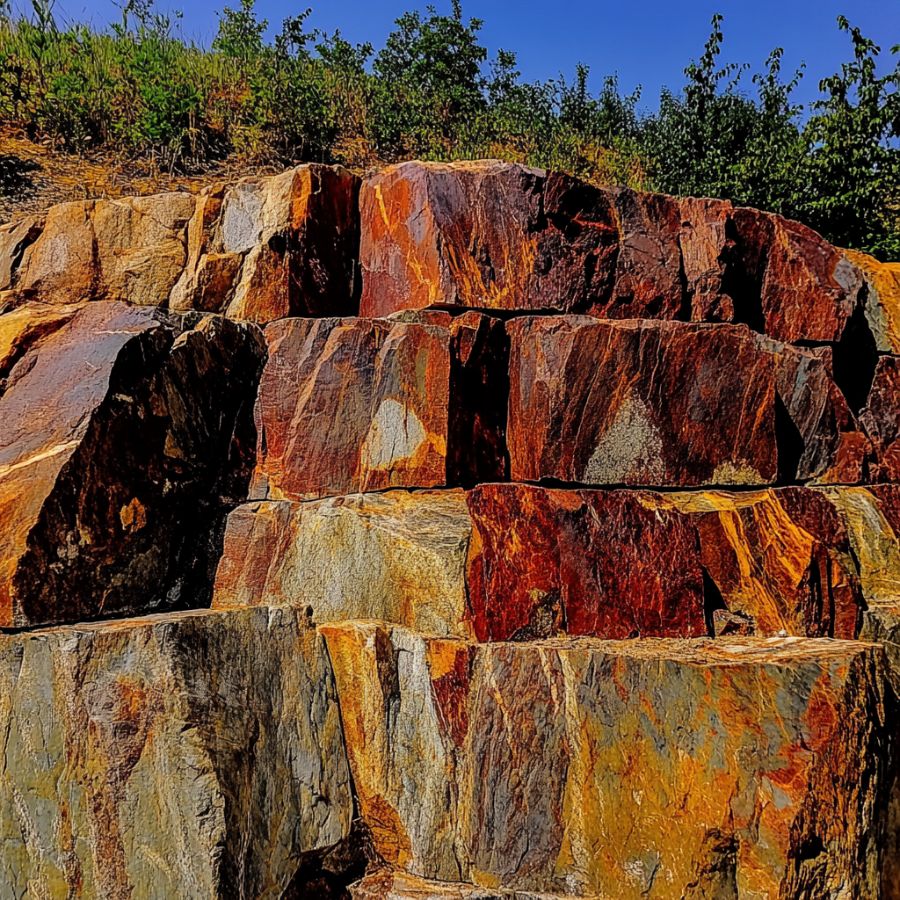
Find areas where rocks show lots of rust colors. These oxidized zones are perfect for azurite formation. Look for rocks with dark brown or reddish staining.
The azurite usually forms in small pockets or as thin crusts. Break open promising rocks – the best specimens are often hidden inside.
Check areas where water runs through rock formations because these spots have more mineral activity.
Desert Areas
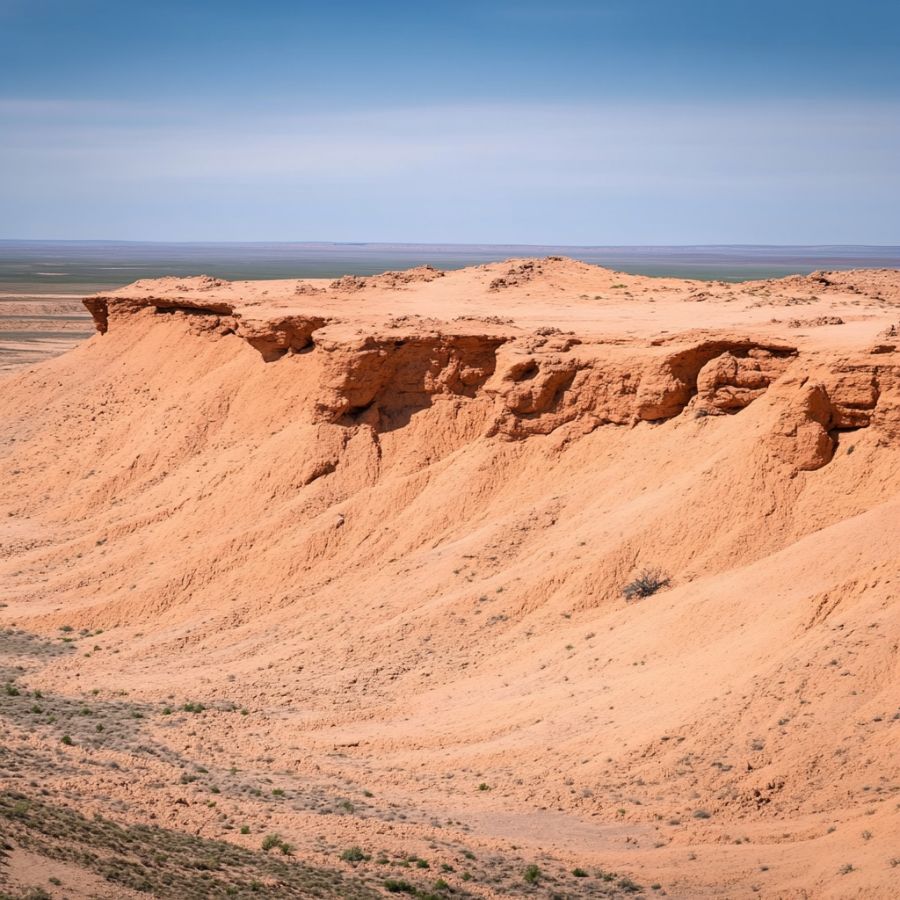
Desert regions with exposed rock formations are great spots. The dry climate helps preserve azurite. Look for areas with copper mineralization signs like green or blue staining on rocks.
Check wash-out areas after storms. Small chunks often collect in gravel beds. The intense weathering in deserts can concentrate minerals in certain spots, making them easier to find.
Some Great Places To Start
Here are some of the better places in the state to start looking for Azurite:
Always Confirm Access and Collection Rules!
Before heading out to any of the locations on our list you need to confirm access requirements and collection rules for both public and private locations directly with the location. We haven’t personally verified every location and the access requirements and collection rules often change without notice.
Many of the locations we mention will not allow collecting but are still great places for those who love to find beautiful rocks and minerals in the wild without keeping them. We also can’t guarantee you will find anything in these locations since they are constantly changing.
Always get updated information directly from the source ahead of time to ensure responsible rockhounding. If you want even more current options it’s always a good idea to contact local rock and mineral clubs and groups
Peace River
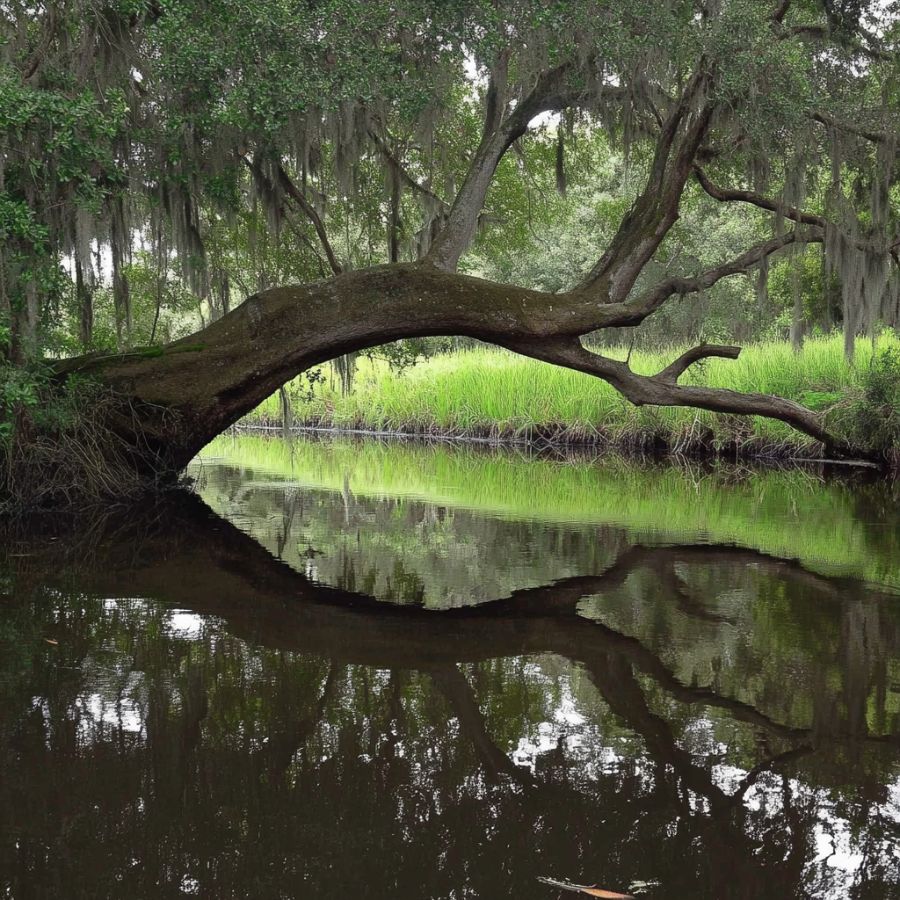
Peace River flows through southwest Florida for 106 miles, starting near Bartow and ending at Charlotte Harbor. This river runs through several counties including Polk, Hardee, and DeSoto. People often find Azurite here while searching through the river’s gravel beds and sandbars.
During dry seasons, more gravel bars become visible, creating better chances to find Azurite and other minerals. These gravel bars contain a mix of rocks, minerals, and fossils from different time periods.
Local rockhounds often search near Arcadia in DeSoto County, where the river’s bends create natural collection spots for minerals.
Visitors can also find shark teeth, prehistoric mammal bones, and other fossils while searching for Azurite. The river’s natural sorting process helps concentrate heavier minerals in specific areas.
Hogtown Creek
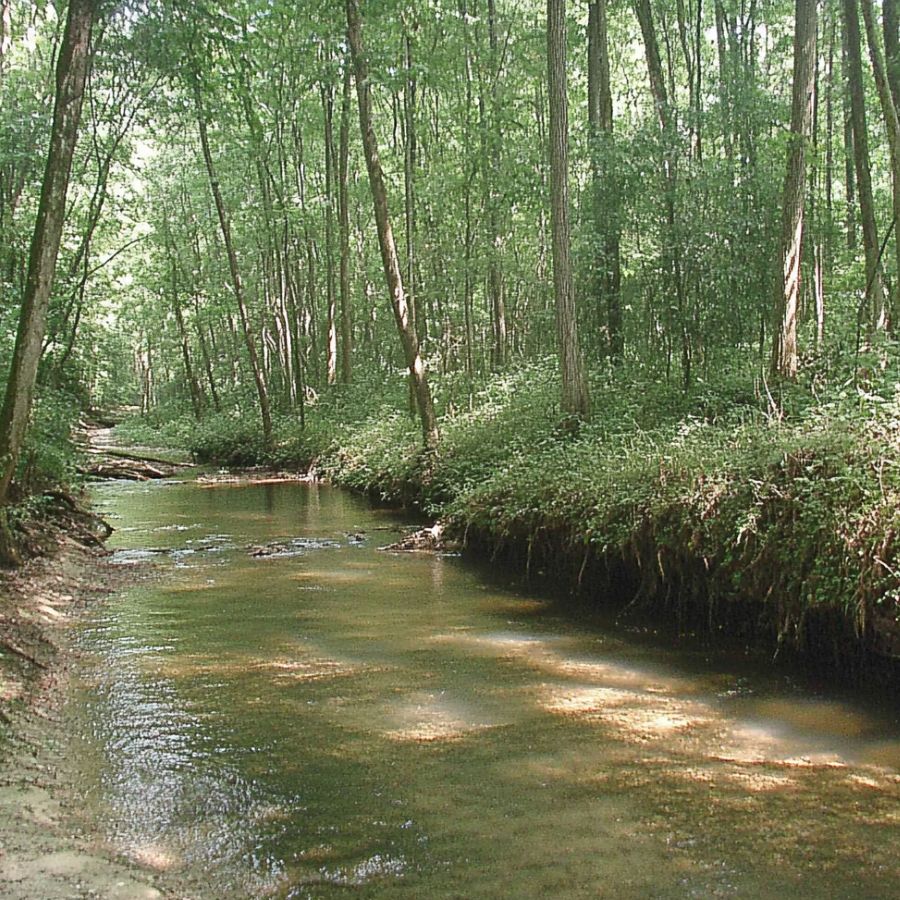
Hogtown Creek is a stream located in Alachua County. It flows across varied landscapes, from old pinelands to wetlands covered in ferns. The creek bed holds many treasures for rock collectors.
The best spots to look for azurite are near NW 45th Avenue and the area called Hogtown Prairie. The creek’s natural erosion often uncovers mineral deposits along its banks. Many collectors search after heavy rains when new materials get exposed.
The creek is part of a larger system that includes several sinkholes and underground waterways. These geological features help create perfect conditions for mineral formation. Local rock clubs often organize group trips to this location because of its rich variety of finds.
Jacksonville
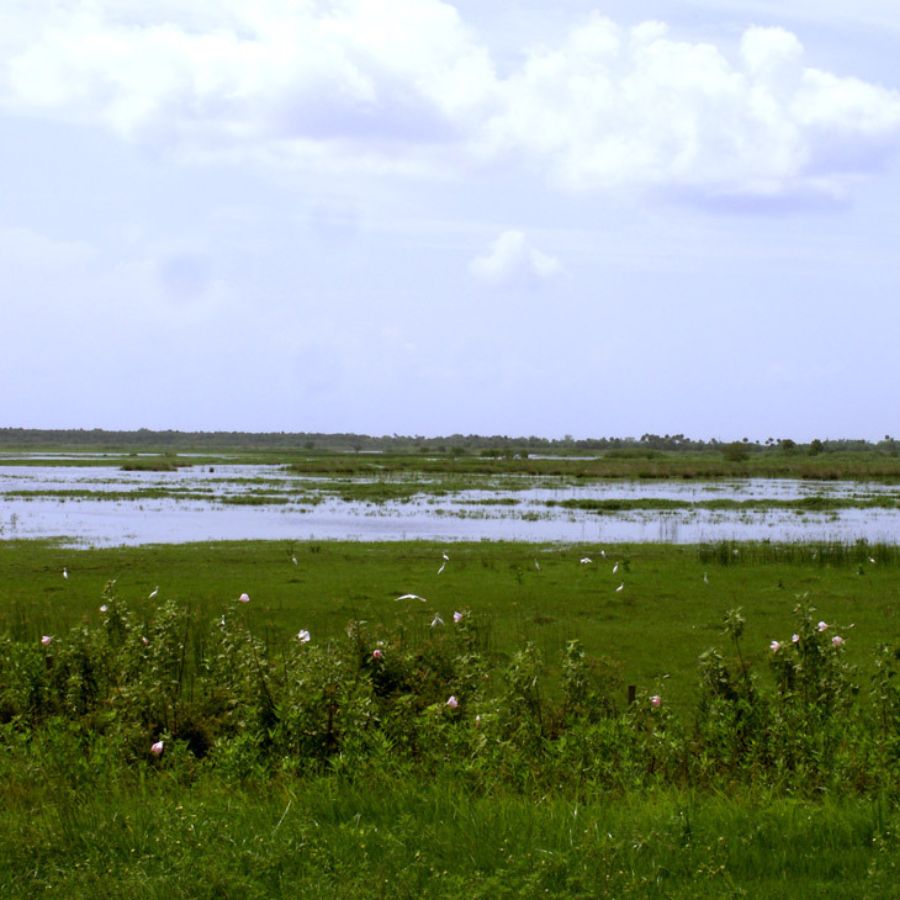
Jacksonville is located along Florida’s Atlantic coast, where the St. Johns River meets the ocean. This busy city has many places where rock collectors can search for minerals.
The area’s limestone and dolomite rocks make it special for mineral hunting. These rocks formed millions of years ago when this region was under the sea. Today, you can find azurite in places where these old rocks are visible, especially near weathered limestone outcrops.
The best spots to look for azurite are along the river banks and in old quarry areas. Water from the St. Johns River often washes away soil, showing hidden mineral deposits.
Withlacoochee River
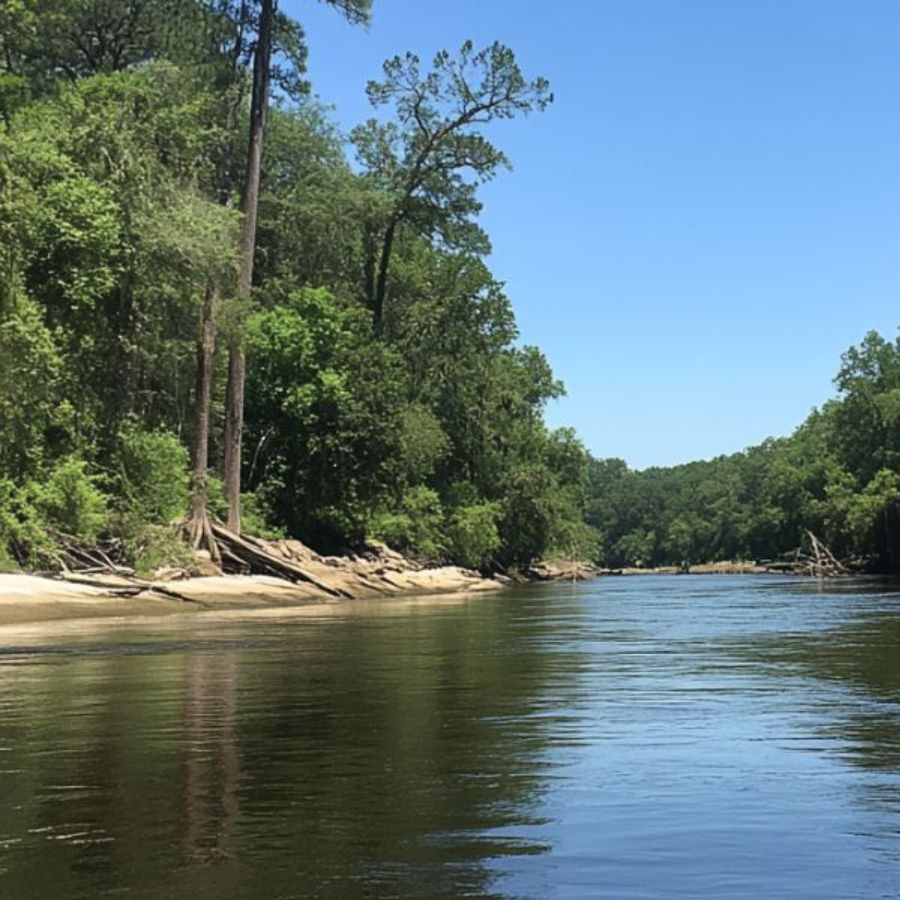
The Withlacoochee River flows through central Florida, starting in the Green Swamp and ending at the Gulf of Mexico. This 141-mile-long river runs through Citrus County, making it a great spot for rock collectors.
Natural springs feed into the river, creating special conditions where minerals can form. Rainbow Springs, Gum Springs, and Citrus Blue Springs add fresh water to the river all year long.
Azurite hunters should look for blue-colored minerals in the limestone outcrops near the riverbanks. The best spots are where the river has cut through rock layers, showing hidden mineral deposits. Spring areas are also good places to look because minerals often collect there.
Santa Fe River
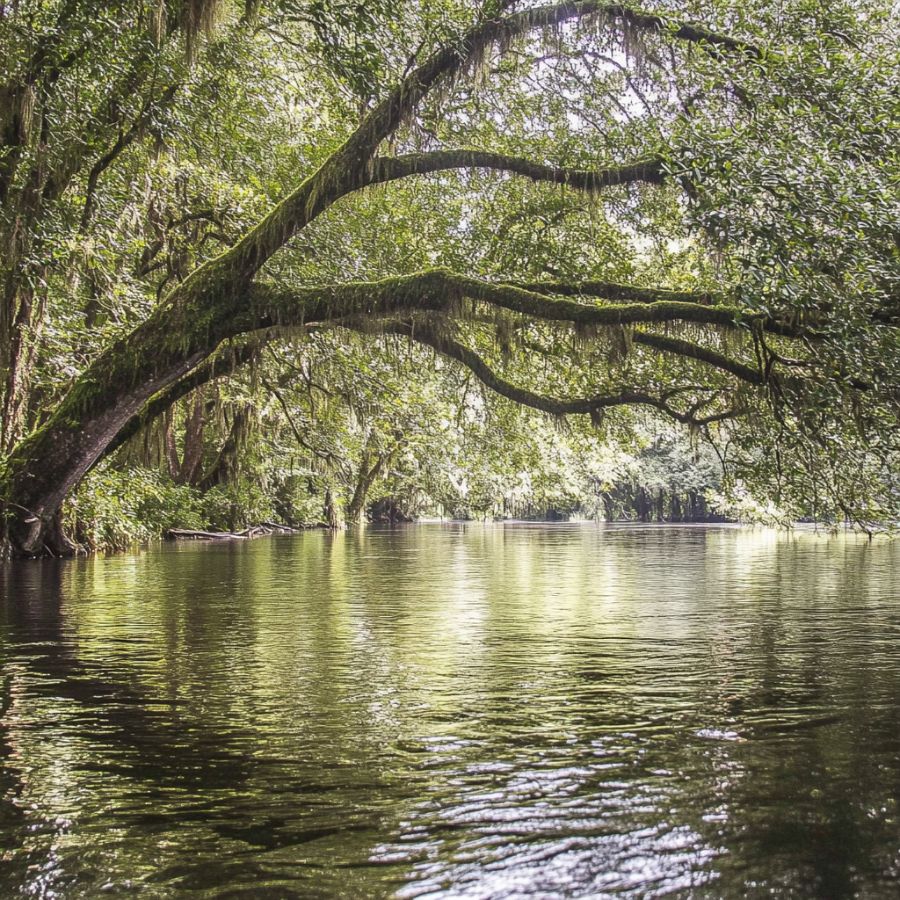
The Santa Fe River flows for 75 miles through northern Florida. Starting from Lake Santa Fe near Keystone Heights, this dark-brown river moves west until it joins the Suwannee River.
Water has carved through limestone over thousands of years, making springs, sinkholes, and underwater caves. Popular spots like Gilchrist Blue Spring, Ginnie Spring, and Rum Island offer clear water perfect for searching.
Rock hunters have the best luck finding azurite when water levels are low. During these times, more of the riverbed shows up, making it easier to spot minerals. The river bottom near springs often reveals interesting rocks and minerals.
Local rockhounds say the best hunting spots are where clear spring water meets the darker river water. These areas often have exposed limestone that can contain azurite deposits.
Places Azurite has been found by County
After discussing our top picks, we wanted to discuss the other places on our list. Below is a list of the additional locations along with a breakdown of each place by county.
| County | Location |
| Okeechobee | Fort Drum Crystal Mine |
| Bay | Shell Island |
| Nassau | Amelia Island |
| Polk | Lake Wales Ridge |
| Lee | Caloosahatchee River |
| Jackson | Chipola River |
| Washington | Econfina Creek |
| Wakulla | Ochlockonee River |
| Suwannee | Suwannee River |
| Jefferson | Wacissa River |
| Okaloosa | Yellow River |
| Santa Rosa | Blackwater River |
| Escambia | Escambia River |
| St. Johns | St. Johns River |
| Brevard | Indian River Lagoon |
| Putnam | Lake George |


